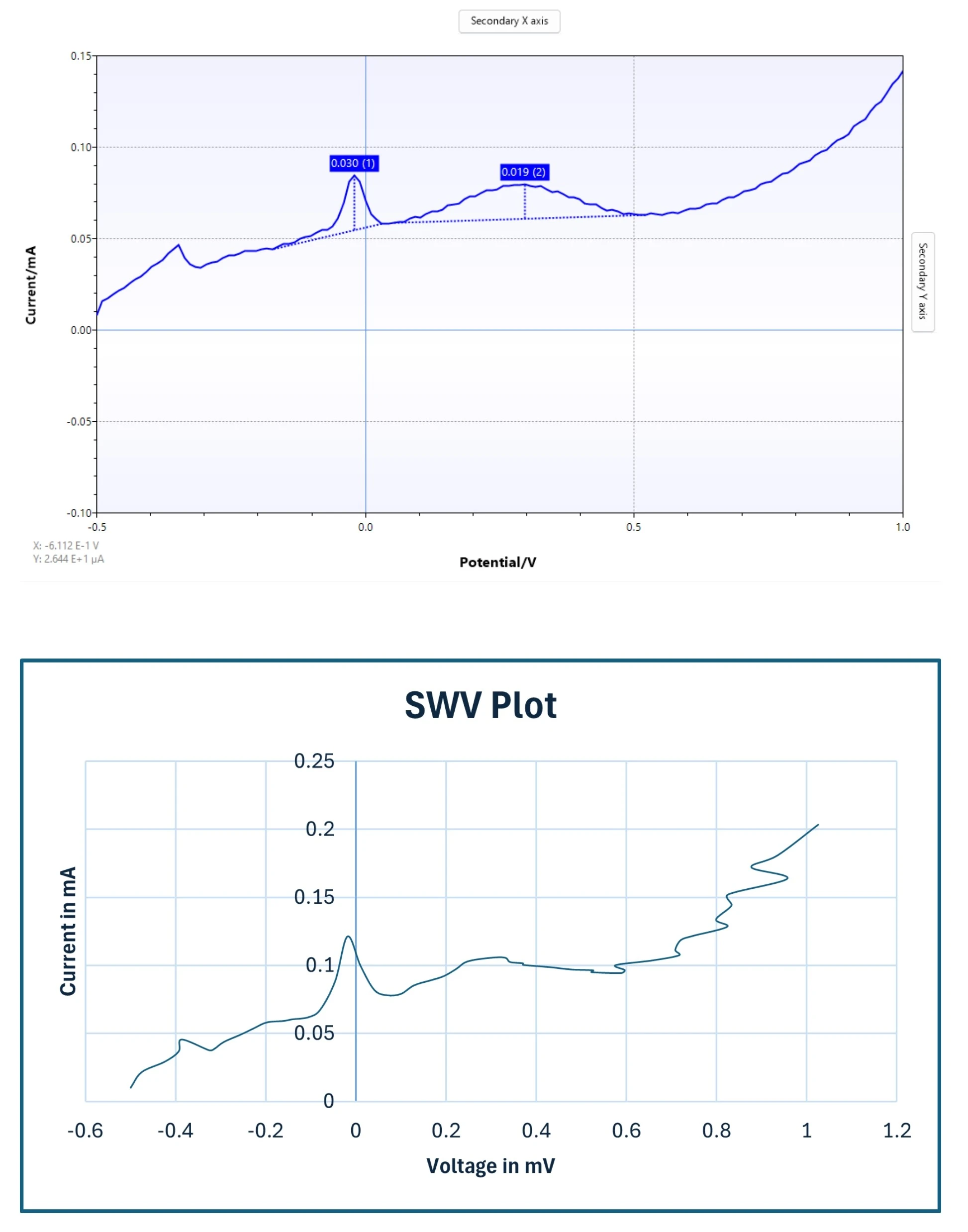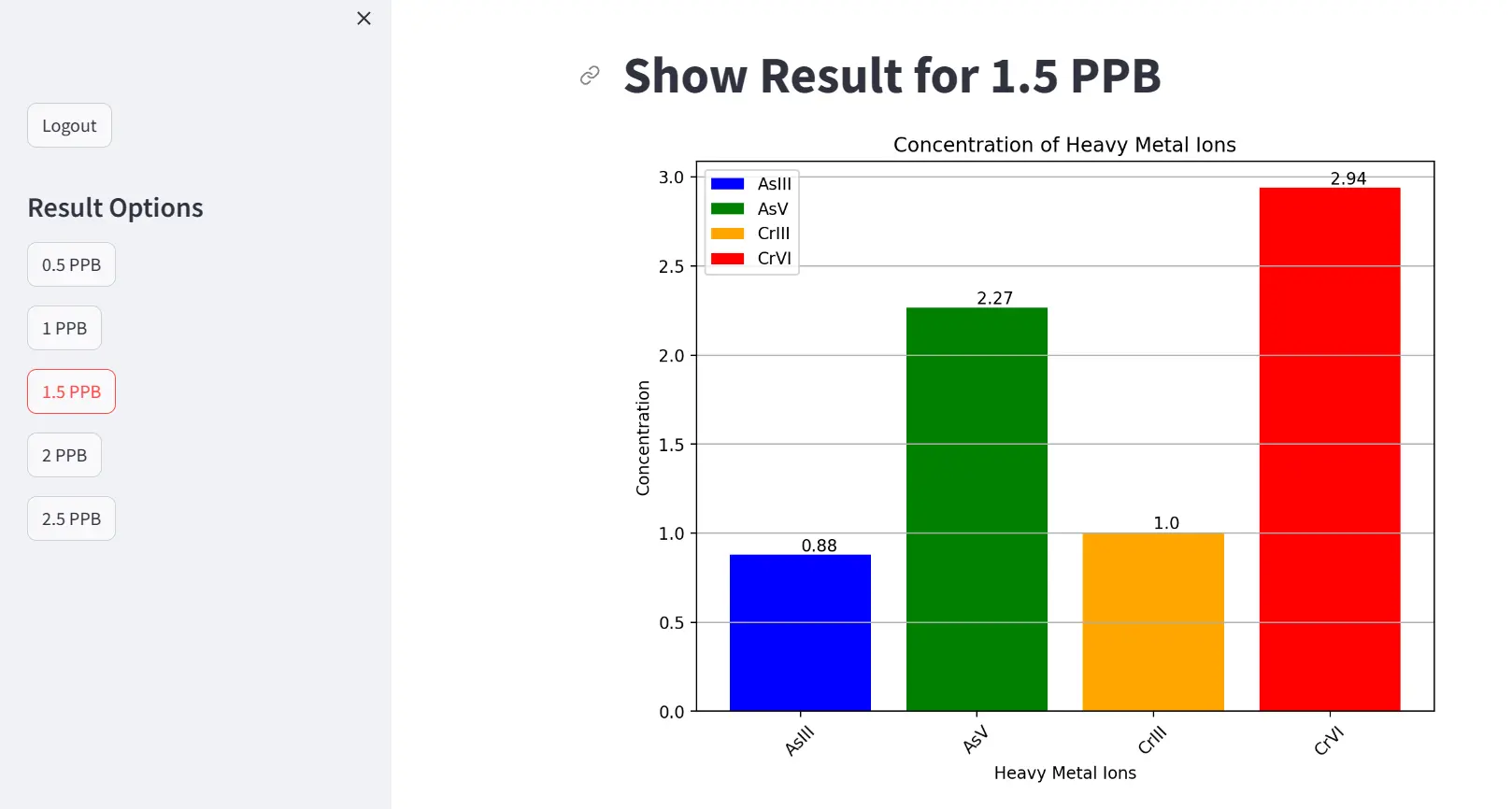Project Snapshot
Hardware Development, Electrochemistry, Signal Processing
Low-cost heavy metal ion detection in water
Square Wave Voltammetry (SWV)
Arsenic (As), Chromium (Cr), Lead (Pb), Cadmium (Cd), Mercury (Hg)
Potentiostat with comparable performance to commercial devices
Research Intern
IIT Hyderabad & Kathmandu University
Prof. Amit Acharyya
September 2023 - May 2024
Project Overview
The Challenge
Heavy metal contamination in water bodies poses a severe global public health and environmental threat. Existing detection methods often rely on expensive, bulky laboratory equipment, limiting their accessibility for widespread, real-time monitoring in developing regions. There is a critical need for low-cost, portable, and accurate solutions for on-site heavy metal ion detection.
Our Solution
This project focuses on the design and development of a low-cost, portable potentiostat specifically engineered for the detection of heavy metal ions (such as Arsenic, Chromium, Lead, Cadmium, and Mercury) in water. Utilizing Square Wave Voltammetry (SWV), the system combines custom hardware with a novel data processing algorithm and user-friendly mobile and web applications to provide an accessible and efficient water quality monitoring solution.
Approach & Methodology
- Potentiostat Hardware Design: Engineered a custom potentiostat circuit capable of performing Square Wave Voltammetry. The design focused on affordability, portability, and robust signal acquisition necessary for accurate electrochemical measurements.
- Advanced Signal Processing: Developed a novel algorithm incorporating windowing and linear extrapolation techniques. This algorithm is crucial for precisely identifying and quantifying specific heavy metal ions by analyzing their distinct electrochemical signatures from the SWV data.
- Multi-Platform User Interface: Created intuitive mobile (using Flutter) and web (using Streamlit) applications. These interfaces enable real-time data visualization, historical data tracking, and simplified interaction with the potentiostat device.
- Real-time Alert System: Implemented a Telegram-based notification system that provides immediate alerts to users upon the detection of toxic heavy metal ion concentrations, ensuring timely intervention.
- Validation and Benchmarking: Rigorously validated the custom potentiostat's performance against industry-standard commercial devices, such as Sensit Smart, demonstrating comparable accuracy and reliability. Validation was also performed using the ADUCM evaluation board and Electrochemical Impedance Spectroscopy (EIS).
Key Results & Visualizations


Technologies Used
Lessons Learned & Challenges
- Precision Analog Circuit Design: Ensuring the stability and accuracy of the potentiostat's analog front-end was critical and posed a significant challenge, requiring careful component selection and noise reduction techniques.
- Signal-to-Noise Ratio Optimization: Optimizing the signal-to-noise ratio in electrochemical measurements, particularly at low ion concentrations, was crucial for achieving reliable detection limits.
- Algorithm Robustness: Developing a robust algorithm (windowing and linear extrapolation) that could accurately identify and quantify ions across varying concentrations and environmental conditions required extensive data analysis and iterative refinement.
- Hardware-Software Integration: Seamless integration between the custom hardware, microcontroller (ESP32), and the mobile/web applications presented unique challenges in data transfer protocols and real-time synchronization.
- Cost vs. Performance Balance: A key learning was striking the right balance between minimizing hardware cost and maintaining high performance, ensuring the device remains accessible without compromising accuracy.
Future Goals
Future work aims to enhance the system's capabilities for simultaneous detection of multiple heavy metal ions (e.g., Cr, Pb, Cd, Hg) by exploring a multi-channel chip array design. Additionally, we plan to further automate data integration and analysis processes, moving towards a fully autonomous water quality monitoring system for continuous environmental surveillance.